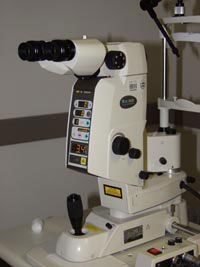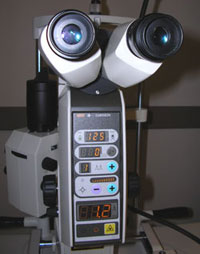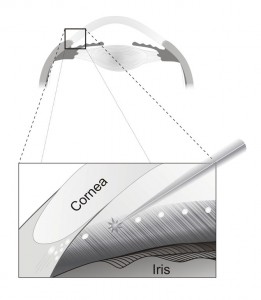If not, than what are ‘Secondary Cataract’ and ‘Posterior Capsulotomy’?
Many patients are concerned that they might need to undergo a second cataract operation on the same eye, some time in the future. I always assure my patients that they needn’t worry about this concern. During treatment, the cataract, which is a clouding of the lens, is surgically removed in its entirety and replaced with an artificial lens made of flexible plastic and implanted inside the eye. This implanted lens will not opacify (become cloudy) while inside the eye, such that the patient is guaranteed a permanent, clear line of vision. So, why are many people concerned that their cataracts might return? In all likelihood, they’ve probably heard of a condition known as a “secondary cataract”, which does require intervention. However, surgery is not necessary. Instead, patients undergo a painless and relatively quick outpatient laser procedure, which usually takes no more than a few minutes to complete.
What is a ‘secondary cataract’?
This is a condition whereby a few residual cells of the original lens, which are always left behind, gradually multiply within the eye in a futile attempt to recreate the original lens which was removed during surgery. In most cases, those residual cells that are always left behind during the original surgery remain inactive, but occasionally – especially in younger patients, these cells might “wake up” and grow on the lens’s posterior capsule. This capsule, which is part of the lens’s outer shell (called the lens’ capsule), is intentionally left within the eye during surgery in order to support the implanted artificial lens. Think of it as the transparent shell of the original human lens that was evacuated, and now the artificial lens is held within this shell. Although this capsule is entirely transparent, when these residual cells multiply on the surface of the posterior capsule, they induce some cloudiness. As a result, the patient’s clarity of vision might slowly and gradually deteriorate. In this case, a short laser procedure is used to create a small opening in the posterior capsule, this time permanently preventing the cells from growing back and blocking the line of sight.
As mentioned before, the incidence of the formation of a secondary cataract is much higher in younger cataract patients. Such process by which residual cells multiply and migrate is completely normal and resembles other healing processes, such as healing of bruises and bone fractures. Therefore, a secondary cataract is not considered a complication or an adverse phenomenon. Instead, it might be regarded as a normal healing response which appears in a certain percentage of cataract patients, mainly in the younger ones. Laser treatment of secondary cataracts is effective and can be performed during an office visit. Lastly, it is important to be reassured that such a laser treatment is final; there is no such thing as a “tertiary cataract.”
So what is a capsulotomy?
The laser procedure described above, that we use to treat secondary cataract is called: capsulotomy. Its full name is ‘posterior capsulotomy’,



